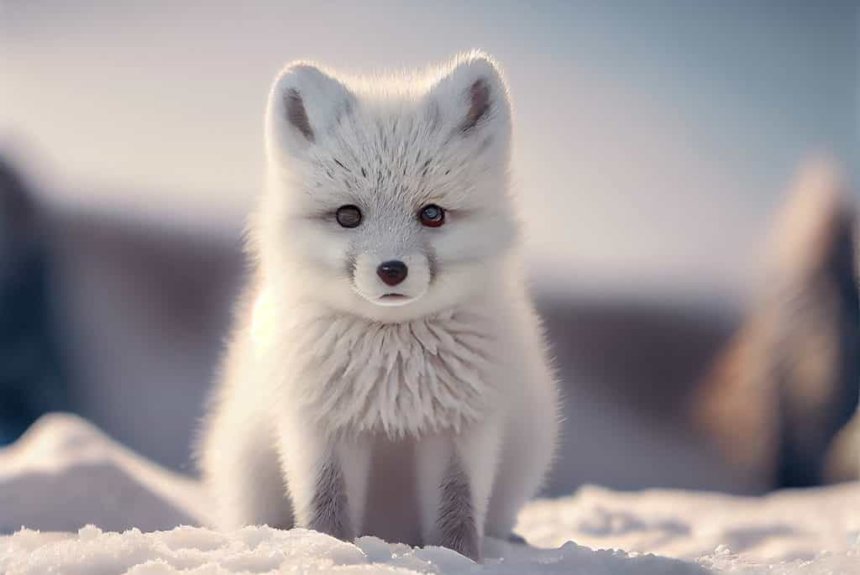Explore the intriguing habits and adaptations of Arctic Foxes in the harsh Frozen Tundra. Uncover their survival strategies.
The arctic fox : Introduction
The Arctic fox (Vulpes lagopus) stands as a resilient and resourceful creature, perfectly adapted to the harsh conditions of the Arctic region. This northern fox, a member of the Canidae family, thrives in the challenging landscapes of the tundra and mountains near the sea. From its physical characteristics to its hunting habits, the Arctic fox has evolved to navigate the extremes of its environment.
ALSO READ : Africa’s Vultures In Peril : A Grim Outlook For The Continent’s Raptors
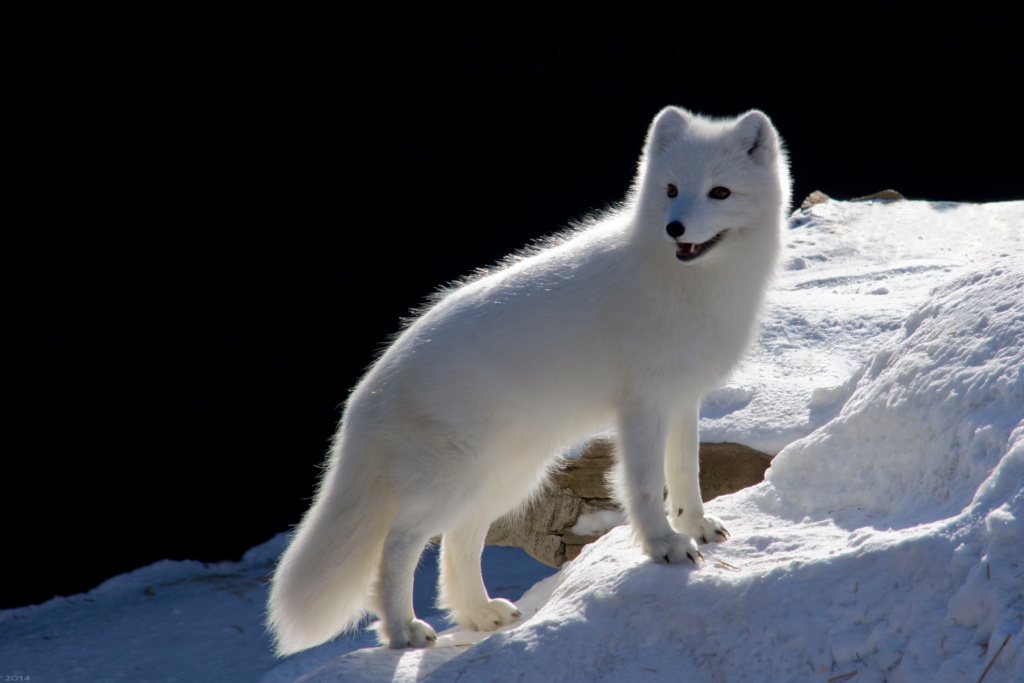
Physical adaptations
Fully grown adults of the Arctic fox reach lengths of about 50–60 cm (20–24 inches), excluding their impressive 30-cm (12-inch) tails, with a weight ranging from 3–8 kg (6.6–17 pounds). Notably, their short rounded ears, compact muzzle, and fur-covered soles serve as adaptations to the unforgiving climate they call home. The coloration of their fur depends on the phase, with “white” foxes transforming from grayish brown in summer to a snowy white in winter, and “blue” foxes displaying a grayish summer coat that transitions to gray-blue in the winter.
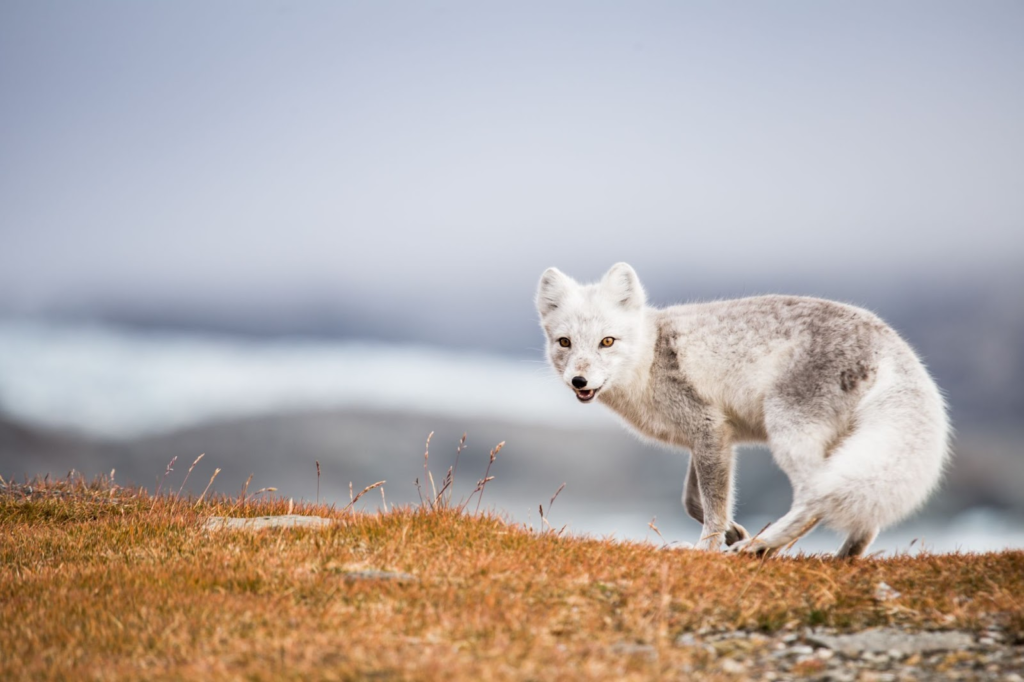
Habitat and behavior
Arctic foxes are burrow dwellers, displaying activity throughout the day as needed. Their diet is versatile, relying on whatever animal or plant material is available. Remarkably, these foxes are known to follow polar bears, scavenging on the remains of the bears’ kills. During summer, they predominantly prey on rodents like lemmings, while winter sees them hunting birds such as ptarmigan, grouse, puffins, and even reindeer. Despite their adaptability, the Arctic fox is not without its threats, falling prey to larger carnivores like polar bears, wolves, and wolverines, as well as facing the challenges of human hunting.
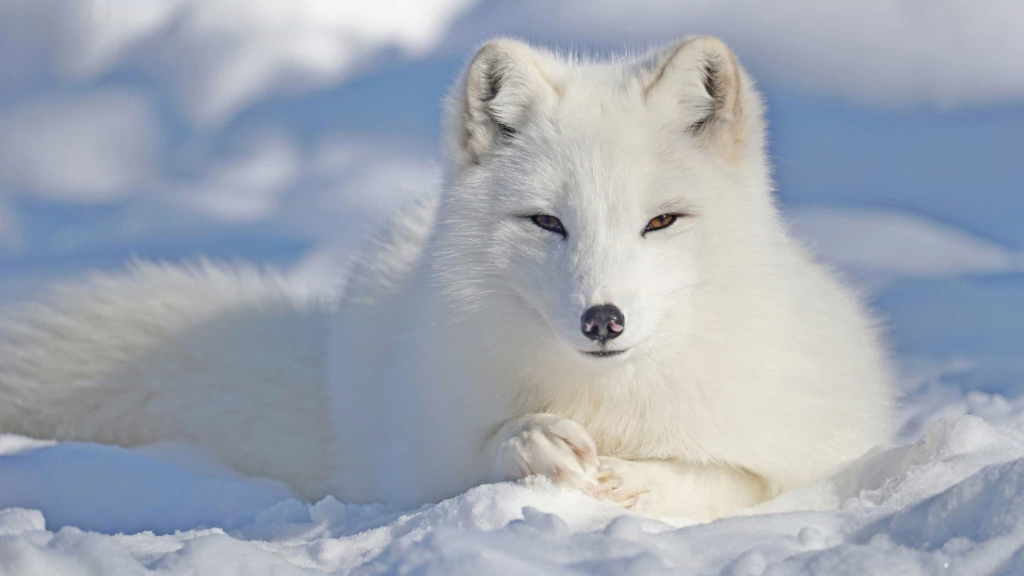
Reproductive cycle
Arctic foxes exhibit fascinating reproductive and developmental patterns that contribute to their remarkable adaptability in the harsh Arctic environment. During the breeding season, which typically occurs once a year, female Arctic foxes undergo a gestation period lasting approximately 52 days. This period culminates in the birth of litters containing as many as 20 dark-furred pups, a testament to the species’ robust reproductive capabilities. The pups are born between April and June, and their early development is closely tied to the changing seasons.
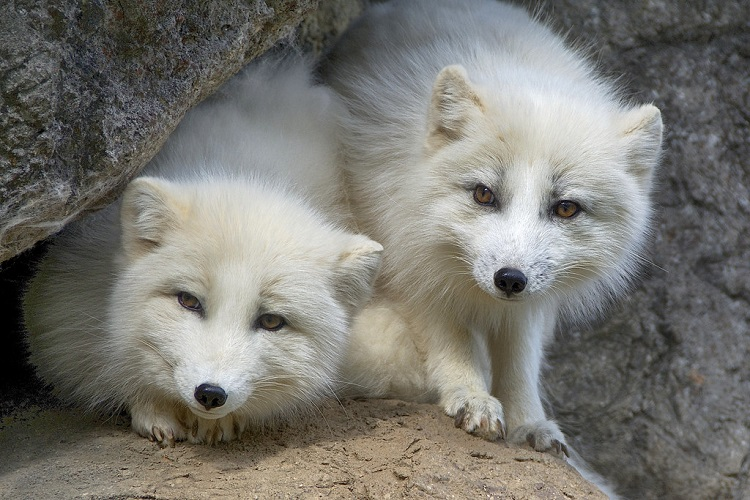
Following birth, the nurturing phase is crucial for the survival of the young foxes. For about 45 days, the pups are meticulously cared for by their mother, who provides them with sustenance and protection within the confines of the den. As the summer months progress, usually around September or October, the Arctic fox pups venture out of the safety of the den to embark on the journey of independent living. This period of exploration and self-sufficiency marks a critical phase in their development.
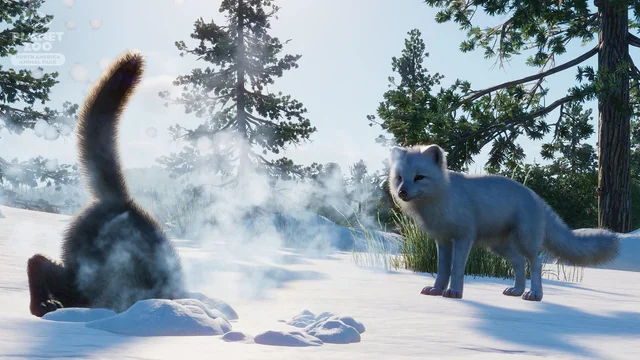
Sexual maturity is attained relatively early in life, typically between 9 and 10 months of age, allowing the Arctic fox population to sustain itself efficiently. This early maturation aligns with the species’ adaptation to the challenging Arctic conditions, where a swift transition to reproductive capability enhances their chances of survival.
However, the challenges in the wild are formidable, and despite their adaptability, the life expectancy of Arctic foxes in their natural habitat is comparatively short, averaging around 3 years. In contrast, under controlled conditions in captivity, these resilient creatures can live up to 10 years, showcasing the significant impact of environmental factors on their lifespan.

Conservation status
Globally, the population of Arctic foxes is estimated to be several hundred thousand, leading the International Union for Conservation of Nature (IUCN) to classify them as a species of least concern. Despite this relatively stable status, hunting for their fur persists, particularly among native Arctic peoples. Fortunately, the decline of the fur hunting industry since the late 20th century has alleviated the pressure on the Arctic fox population.
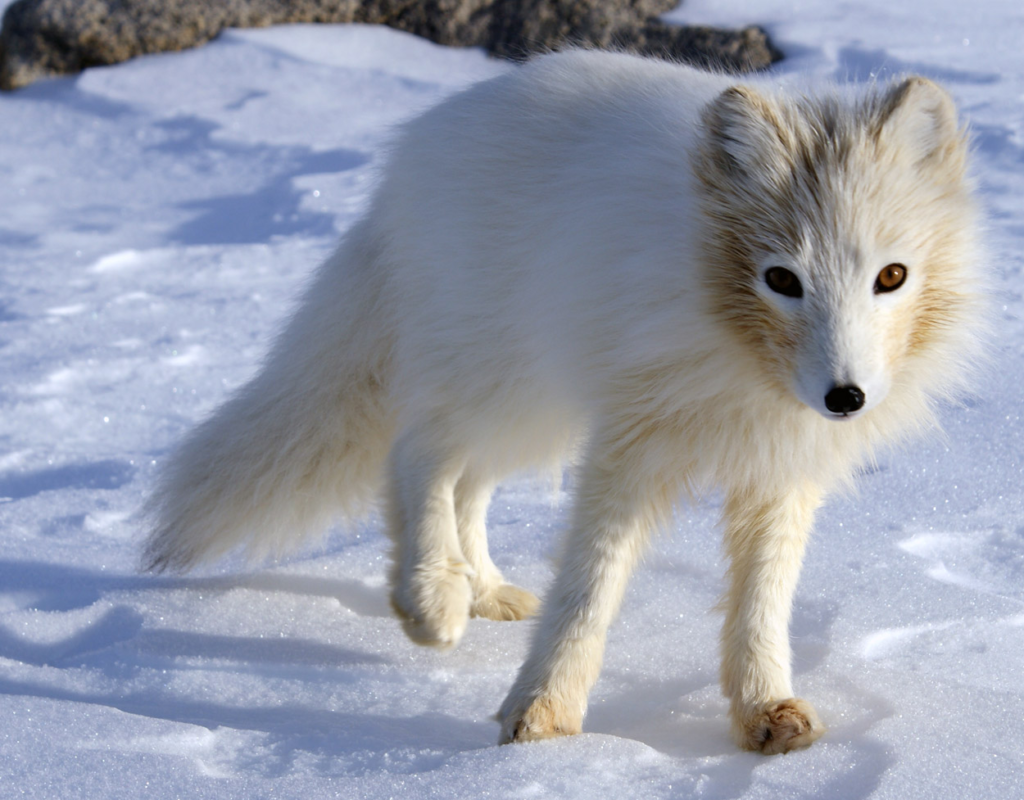
Conclusion
The Arctic fox serves as a testament to the incredible adaptability and resilience of wildlife in extreme environments. Facing challenges from the ever-changing Arctic climate and human activities, these foxes continue to navigate their icy homes with remarkable survival strategies. As we marvel at their ability to thrive in the frozen north, it is crucial to recognize the importance of conservation efforts to ensure the continued well-being of this iconic species.
To explore more news : Click Here
ALSO READ : The Winter Survival Strategies Of Honeybees : A Closer Look At The Three Month Slumber Party







